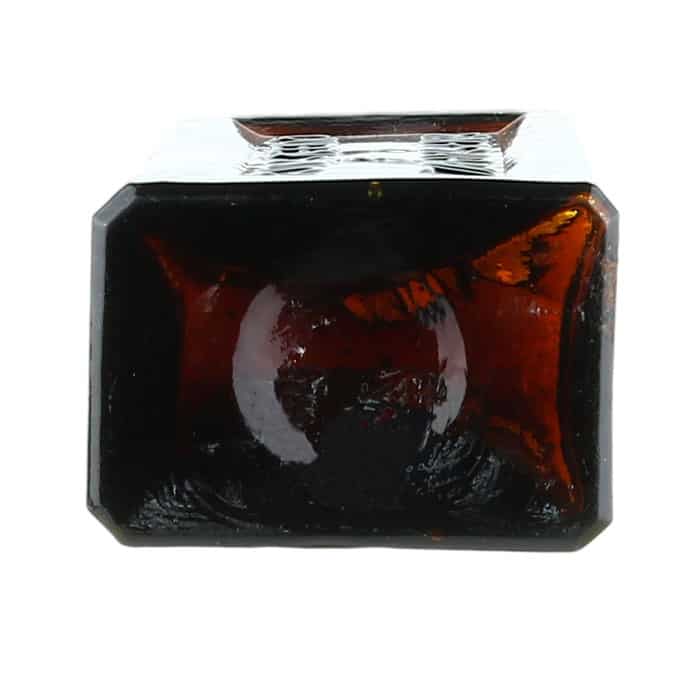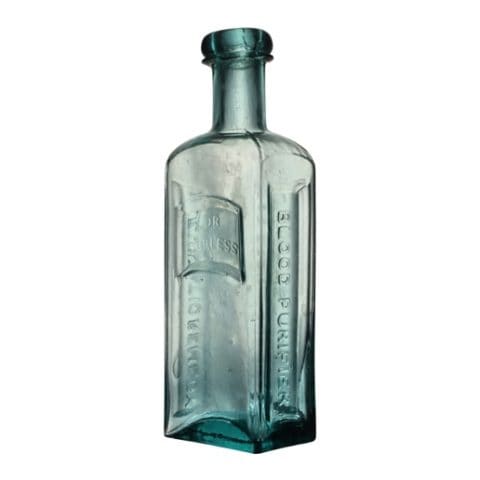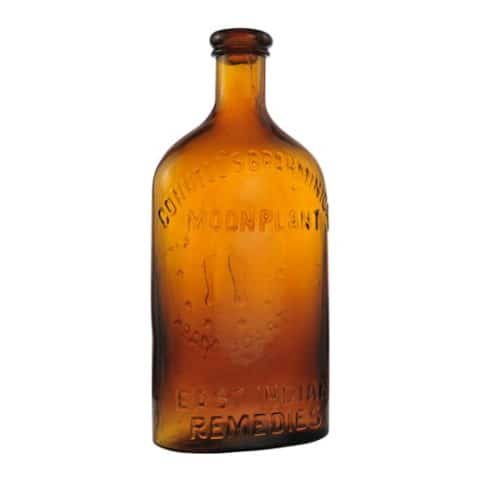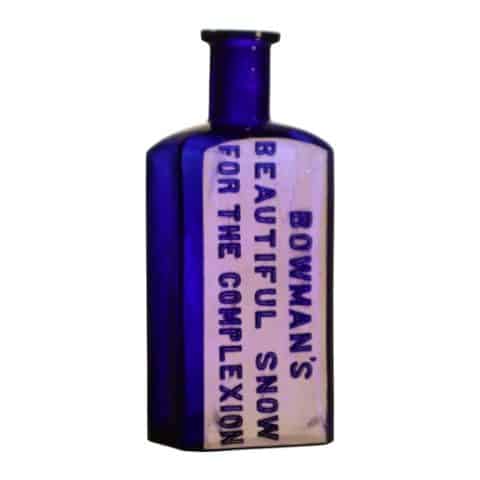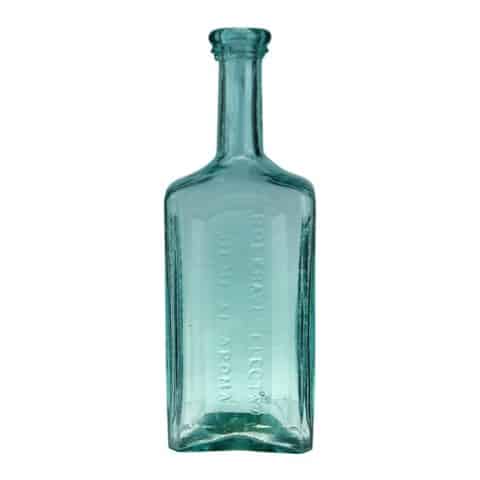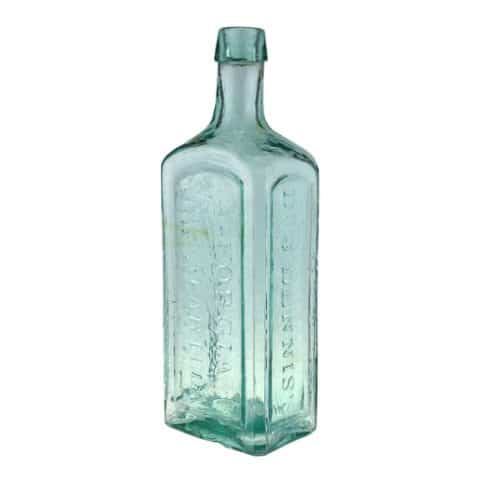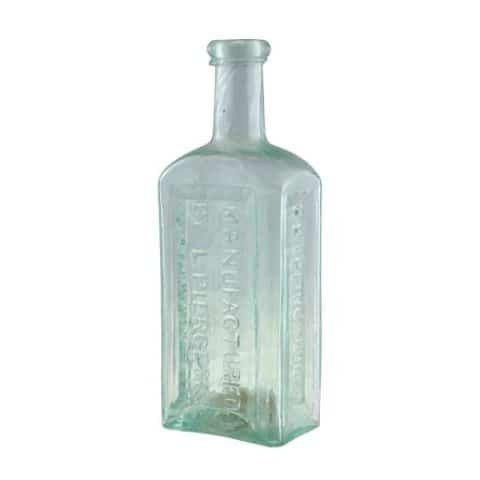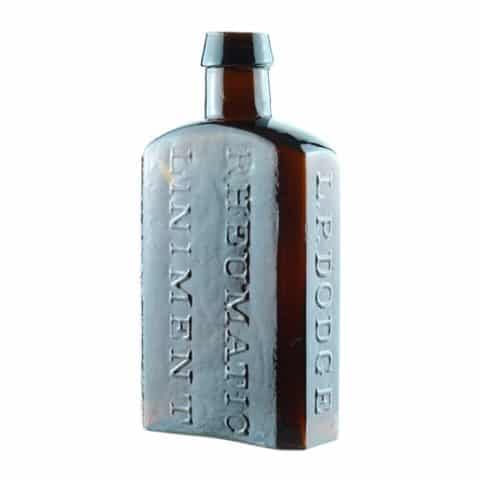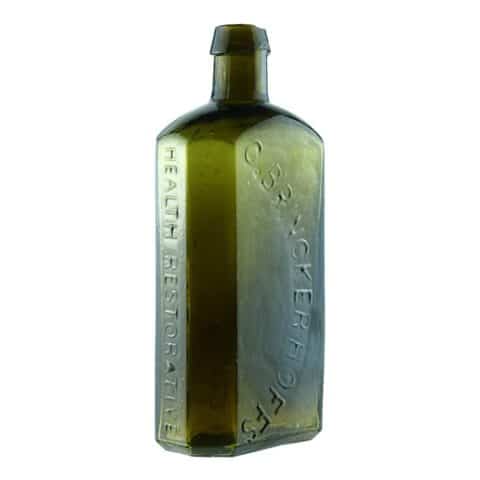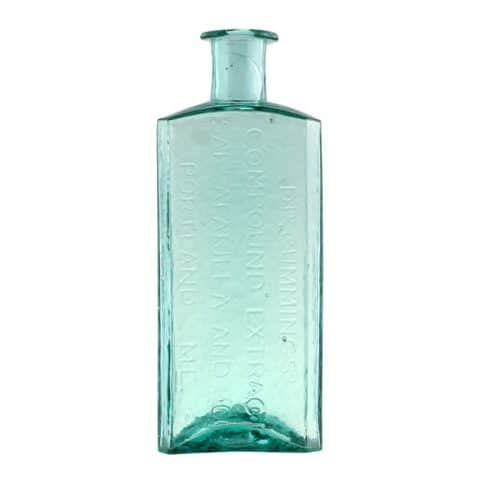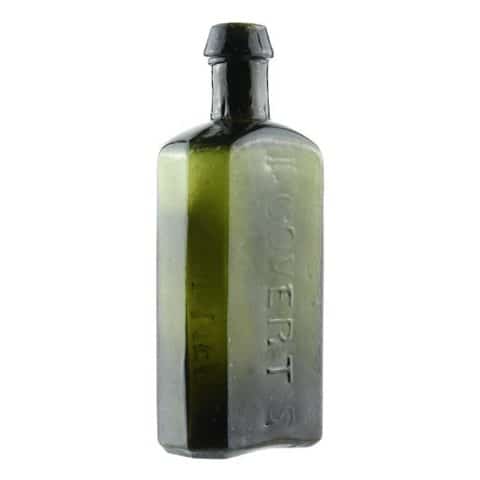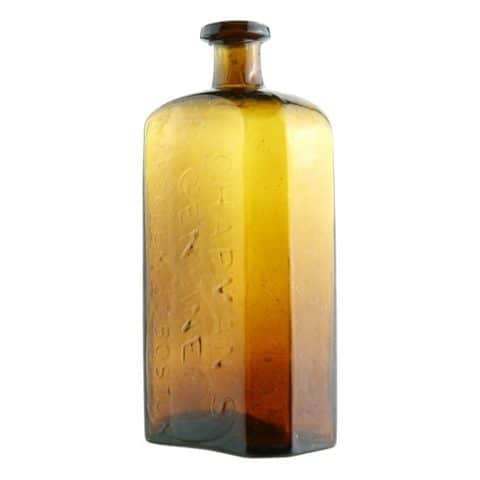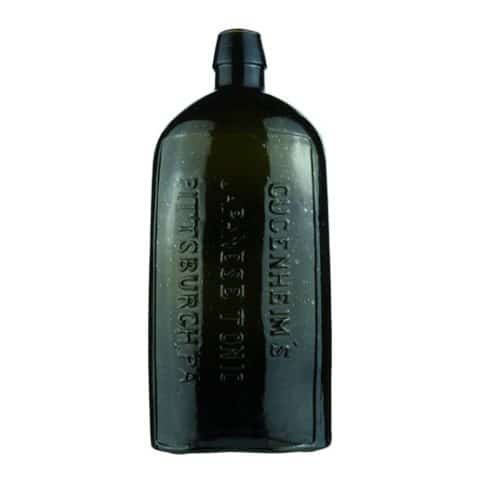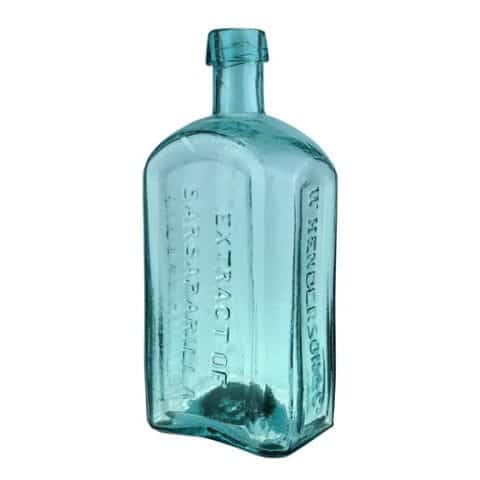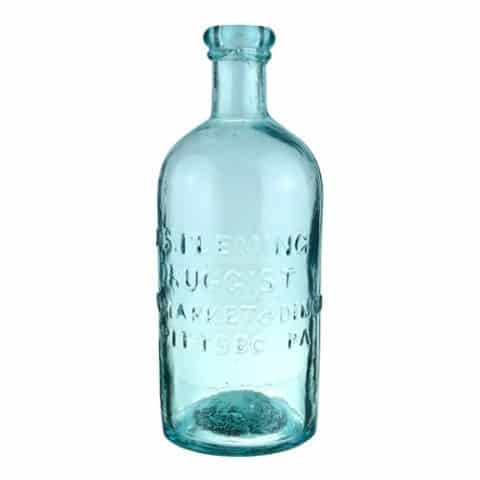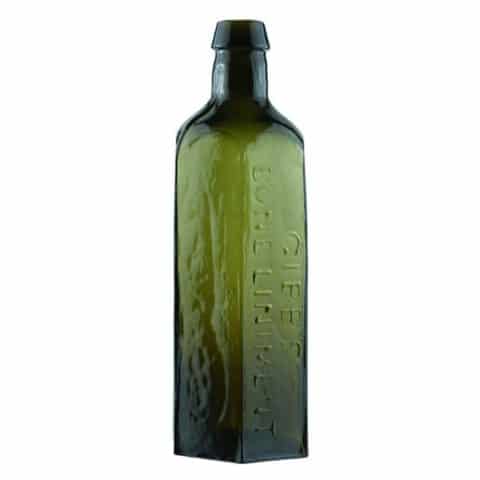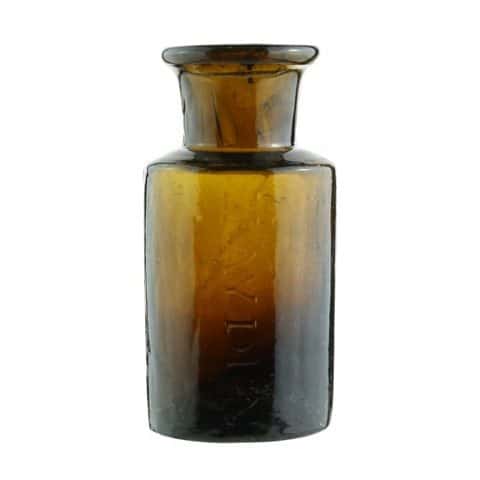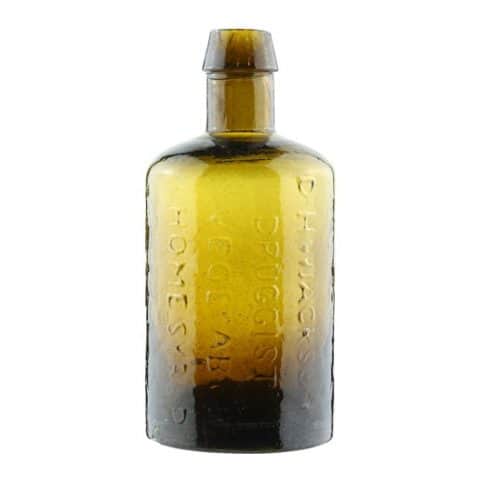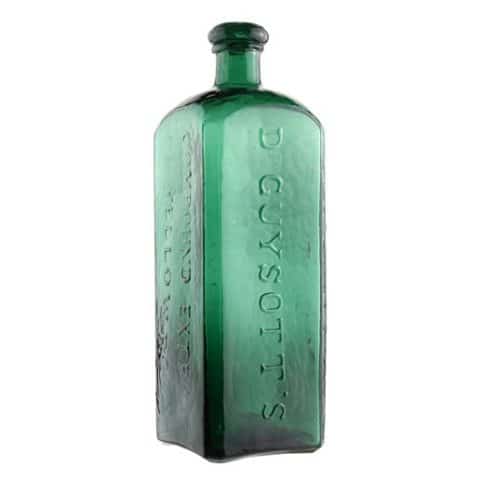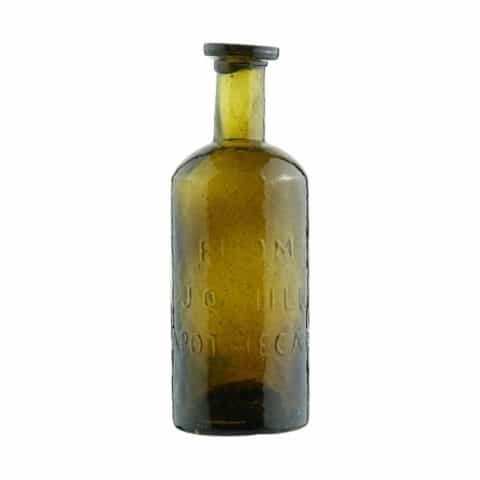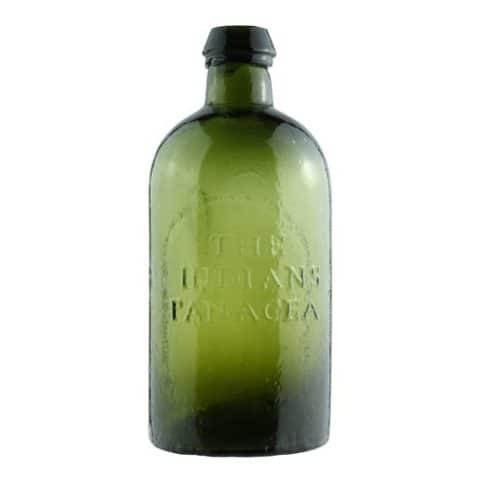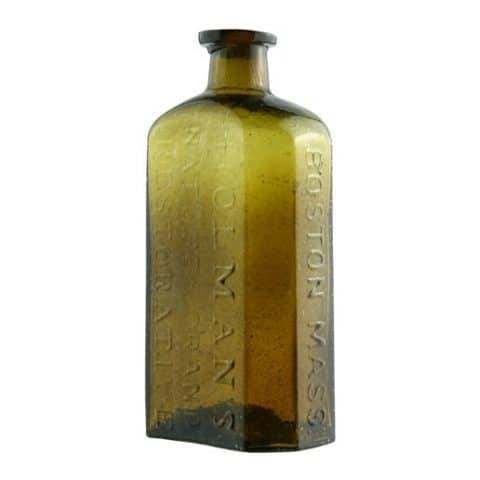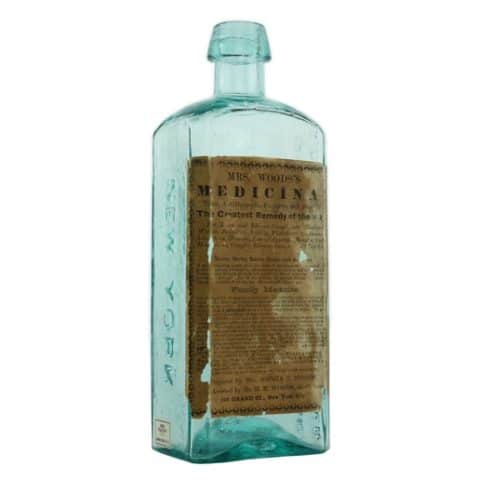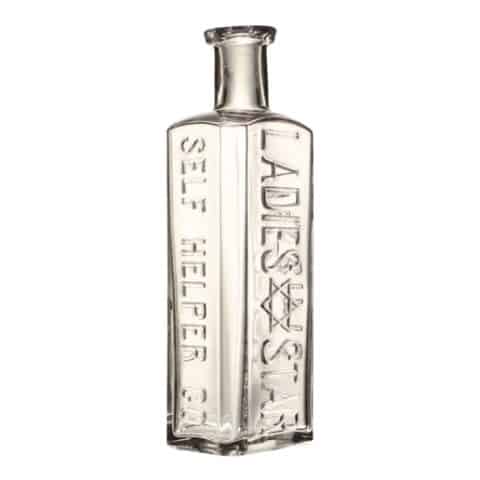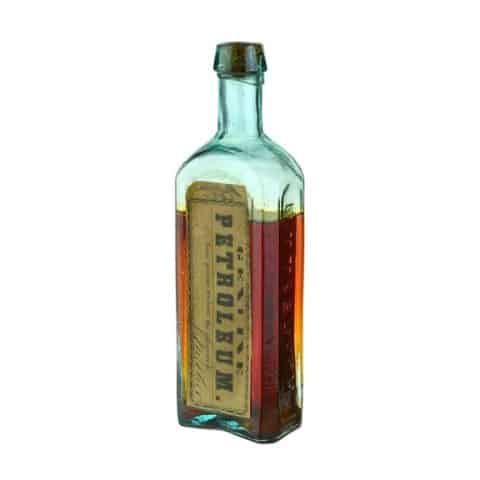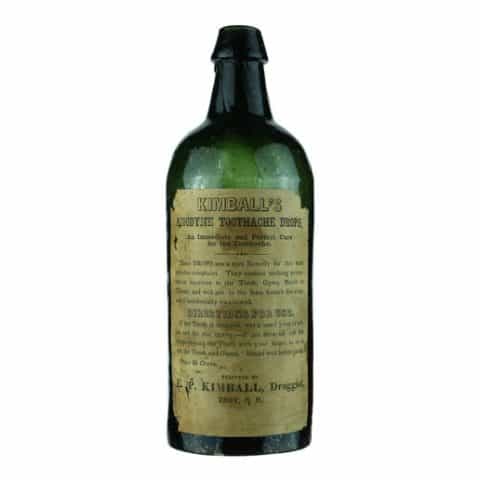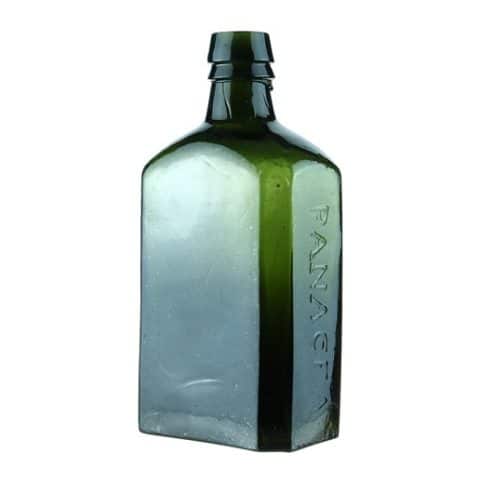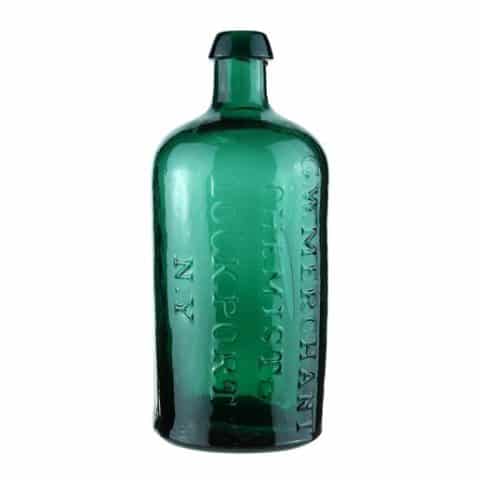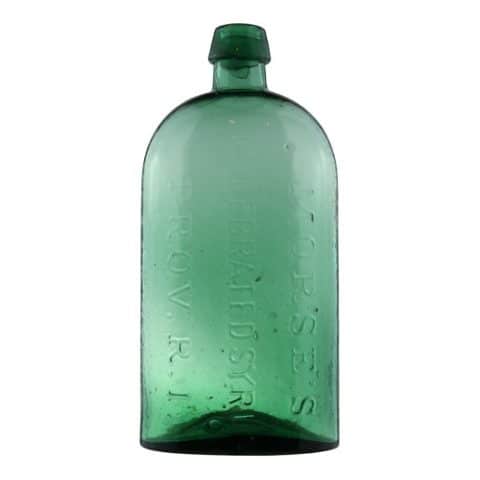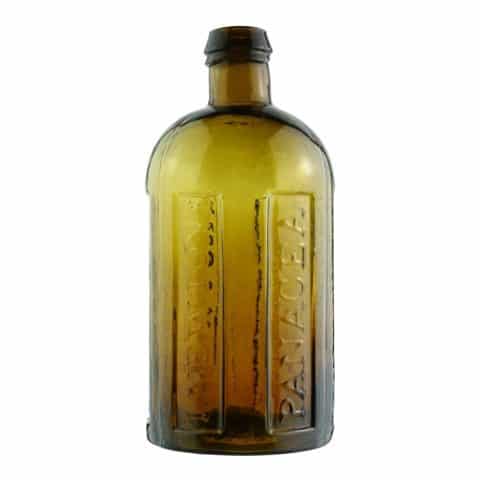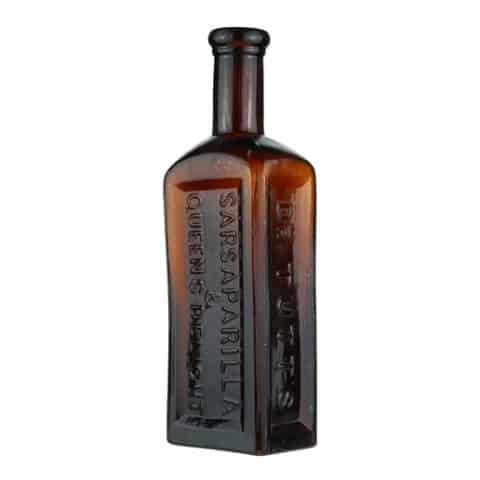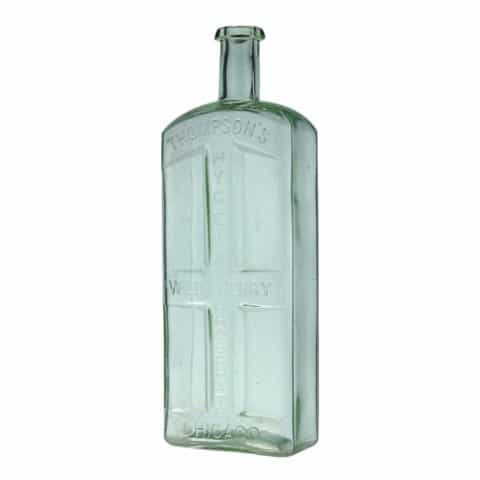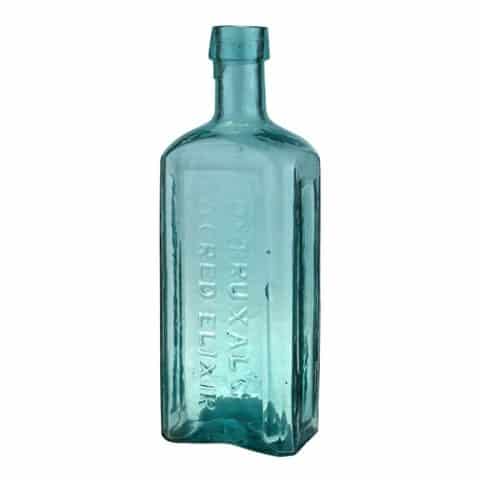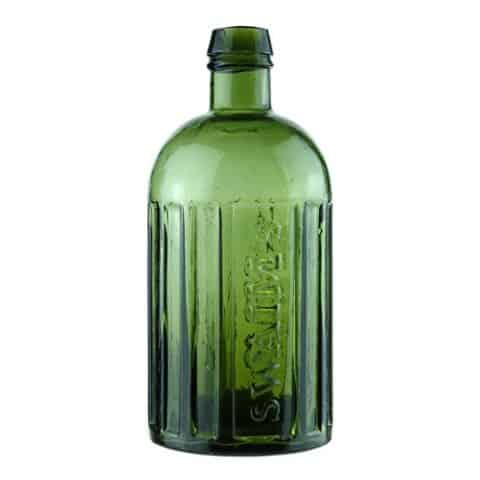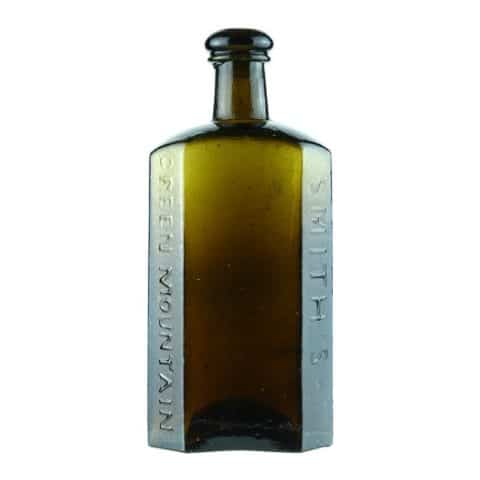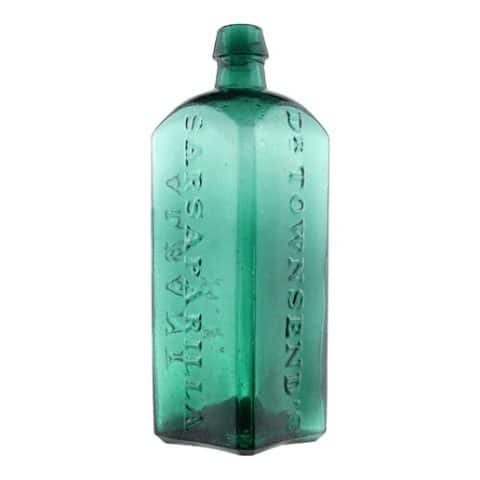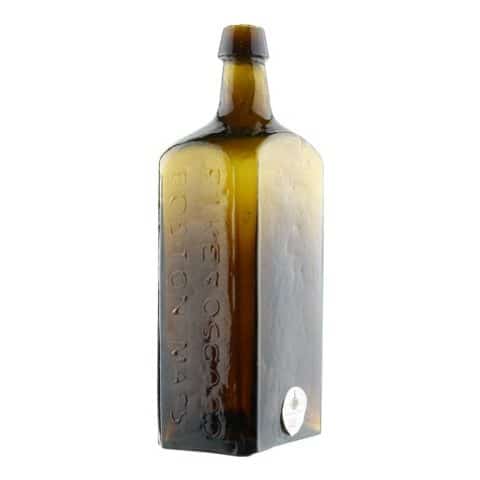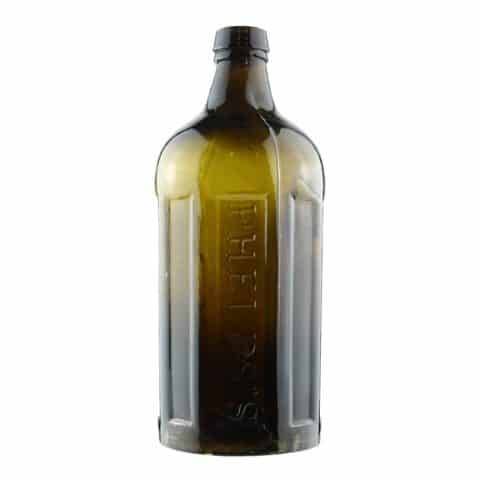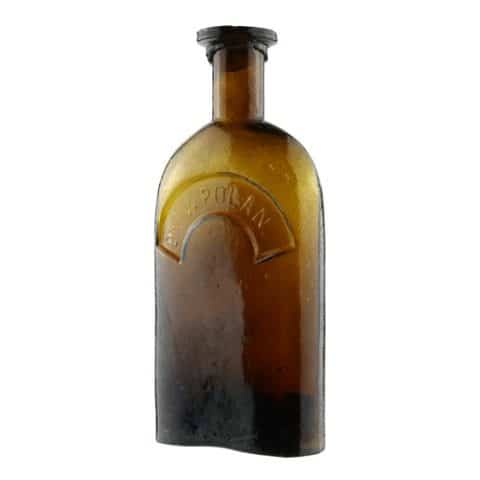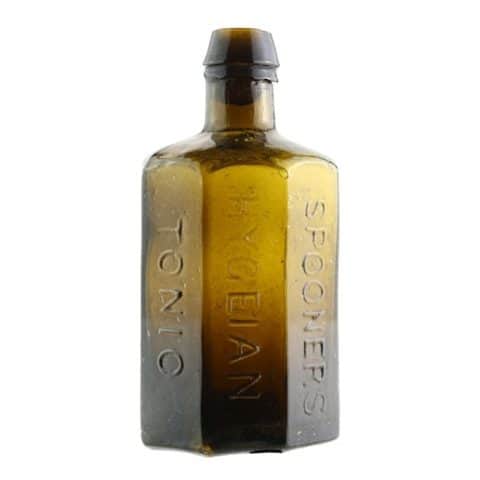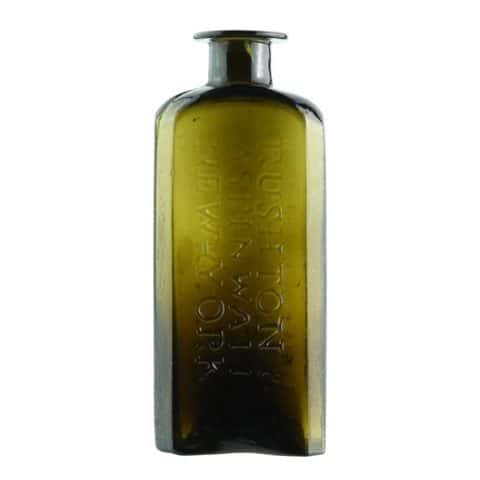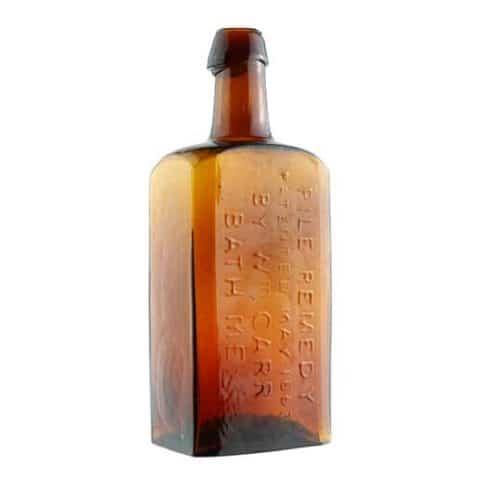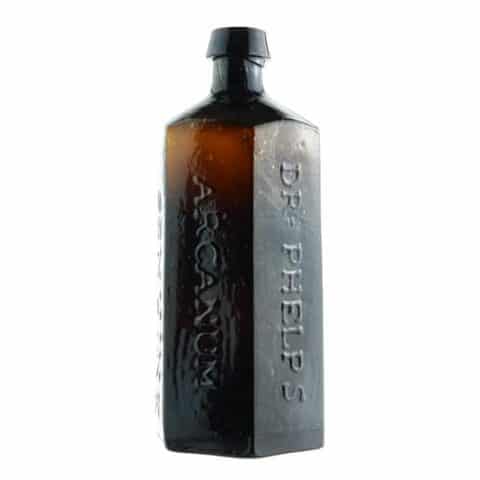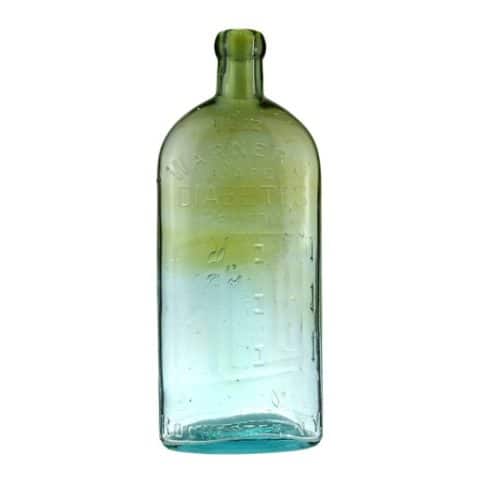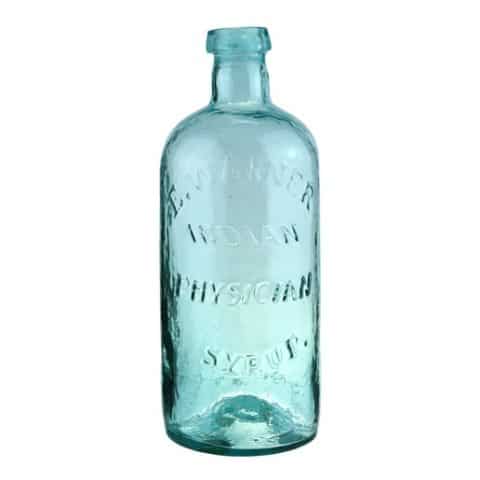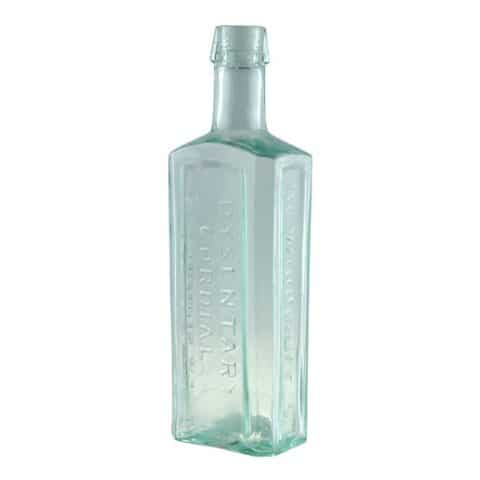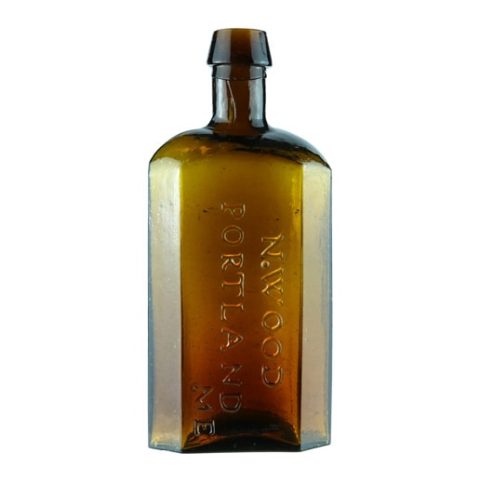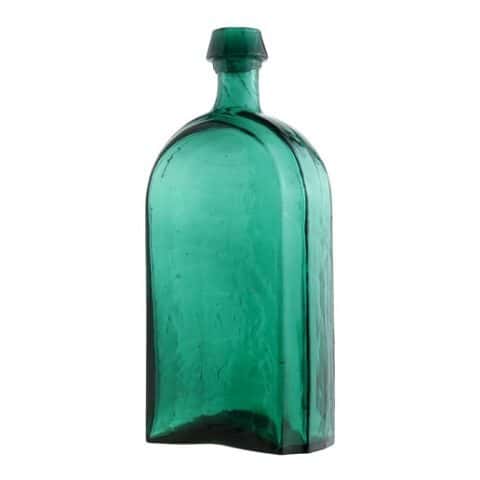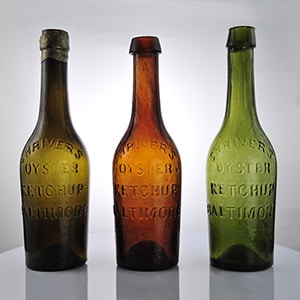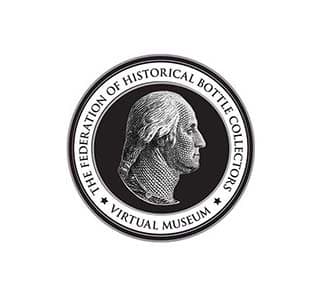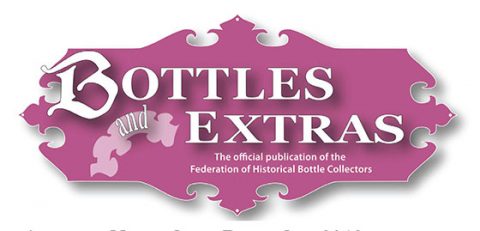Dr. Tutt’s Sarsaparilla & Queens Delight Augusta Ga.
Dr. Tutt’s Sarsaparilla & Queens Delight
Augusta, Ga
Dr. William H. Tutt
Augusta, Georgia & New York City, New York
Amber Rectangular Medicine
Provenance: Mike Newman Collection
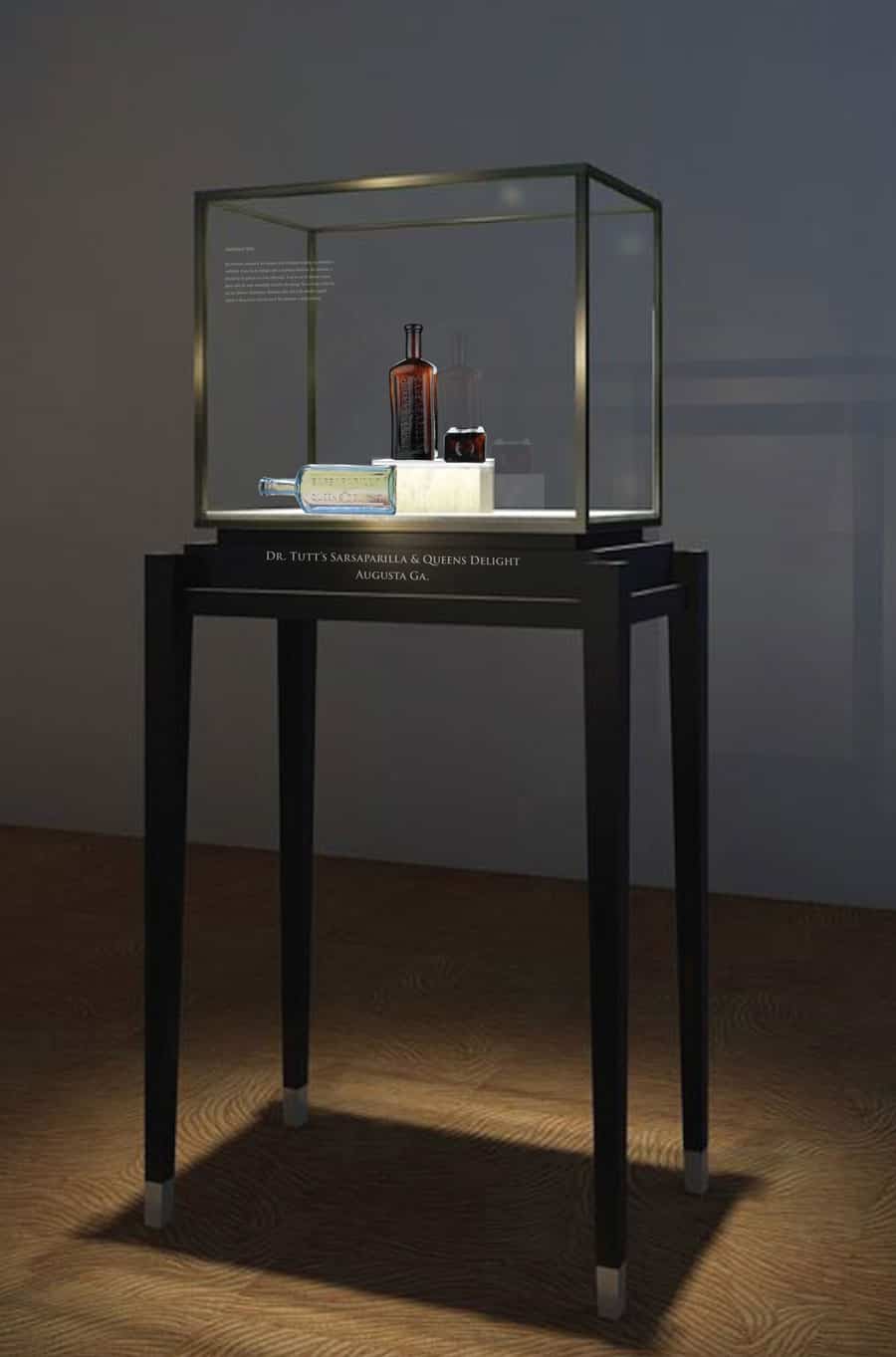
William H. Tutt was born in Augusta, Georgia, on August 31, 1823, and was a wealthy druggist, prominent physician, and one of the city’s most versatile entrepreneurs of the 1800s. He graduated from Augusta Medical College and later amassed a sizable fortune as he became a patent medicines manufacturer in Augusta and New York City.
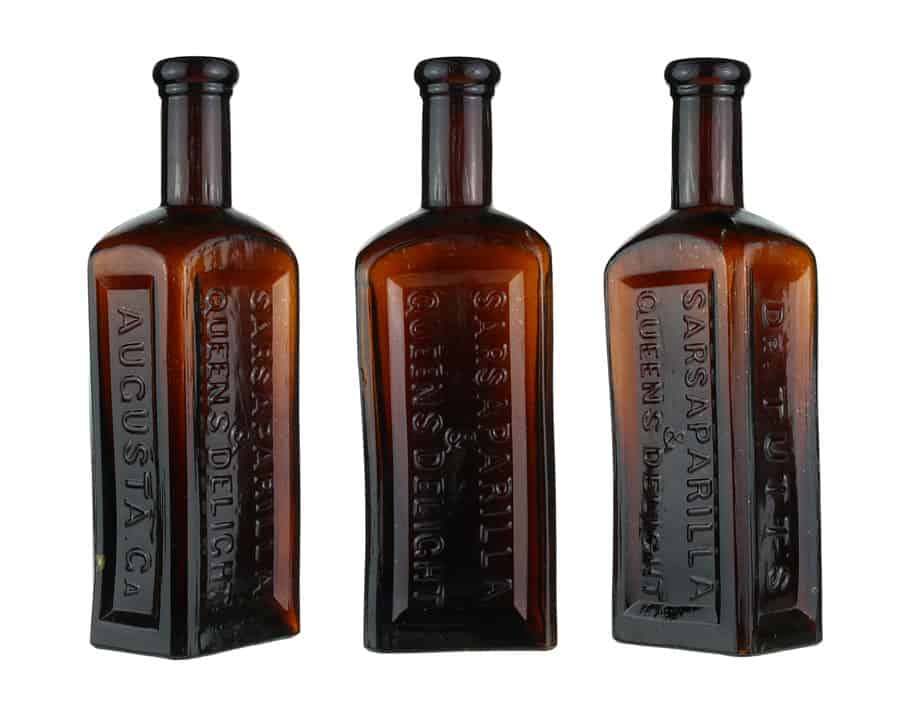
Our dark amber example of a “Dr. Tutt’s Sarsaparilla & Queens Delight” bottle is extremely rare, with only three or so reported. Also found in aquamarine, the bottle is considered rare. The 7-3/8 inches tall specimen is rectangular with beveled corners, has a double ring collar, and a smooth base. The mold is virtually identical to Dr. Tebbett’s Physiological Hair Regenerator bottle. The embossed sans serif copy occurs from shoulder to base in three recessed vertical beveled panels starting on the side with ‘DR. TUTT’S.’ The “R” is smaller in “Dr.” The face panel is embossed in a similar manner in three centered lines, ‘SARSAPARILLA’ (top line), ‘&’ (middle line), and ‘QUEENS DELIGHT’ (bottom line). The other thin side is embossed ‘AUGUSTA, GA.’ The fourth panel is smooth and is where a paper label would have been placed. Queen’s Delight is a plant. The root is used as medicine.
Dr. William Henry Tutt
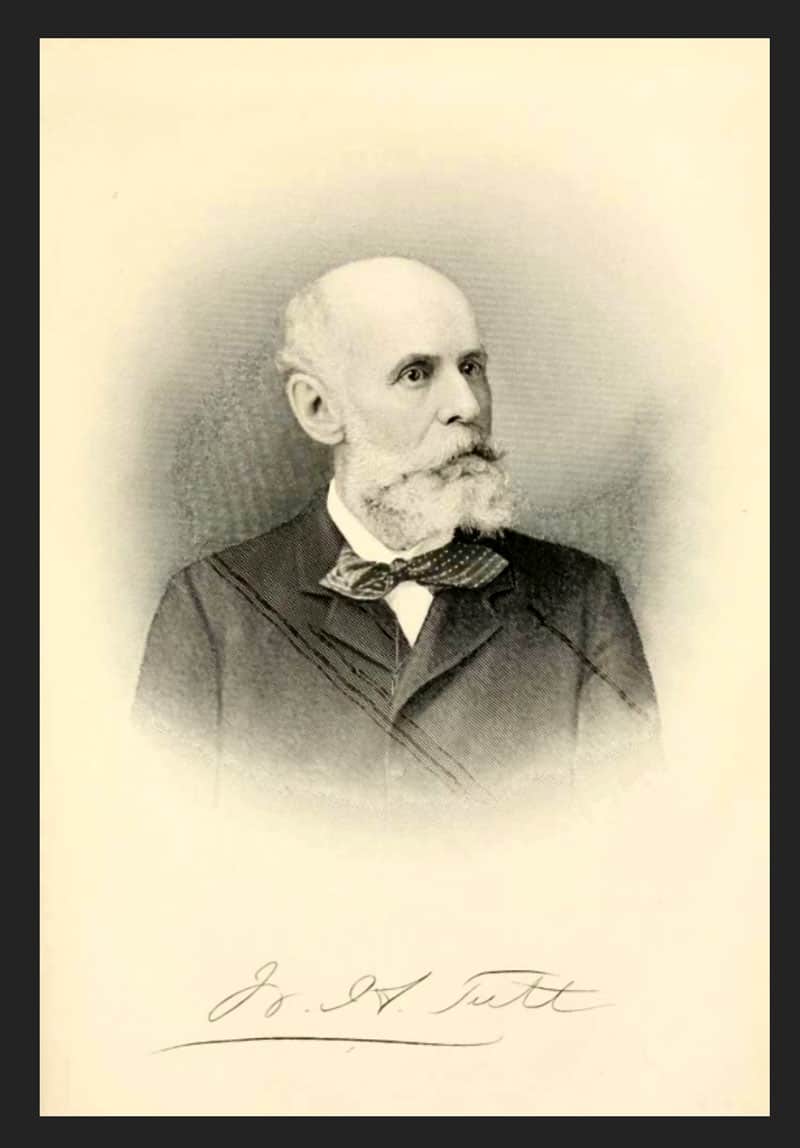
In 1845 Dr. Tutt began business in Augusta as a physician, starting the course of a long practice. For many years he held the position of Demonstrator of Anatomy in one of the best medical colleges in the United States and, for 25 years, made a special study of the liver and kidneys, the body’s most essential organs. In treating liver disorders, Tutt successfully prescribed the extract of a certain plant that is a perfect substitute for calomel and possessed all the virtues of that mineral without any harmful effects. He decided to put this remedy up in such a form as to place it within reach of all sufferers at a small cost, and Tutt’s popular liver pills were the outcome. Dr. Tutt at first selected only the south for their sale where they were used by almost everyone, even the best physicians prescribing them. The demand for his resources became such that he needed to move his Augusta laboratory to New York City to secure larger manufacturing and distribution facilities.
Dr. Tutt realized that there was more money to be made in pharmacy, particularly patent medicines. He also recognized the value of good marketing and was a heavy advertiser in national newspapers. He became famous throughout the country and the world as the proprietor and manufacturer of Tutt’s Liver Pills, which was painted on wooden fences, barn roofs, and often the sides of buildings. It is said that the first year Tutt was in New York, he expended over $25,000 in cash and advertising before he began to see any returns..
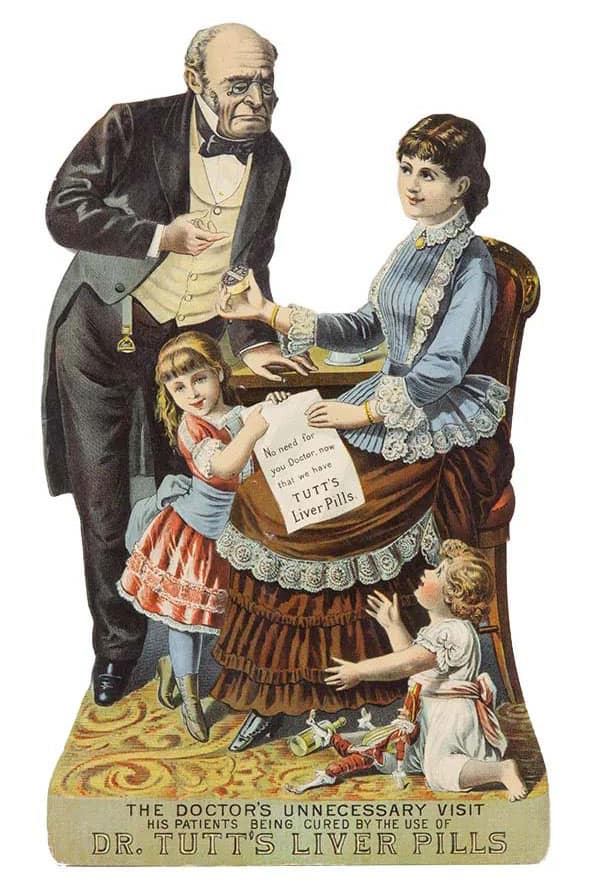
Dr. Tutt started his drug business in Augusta in 1850 and was associated with several Augusta partners. While Tutt was in New York, he retained his Augusta drug business as W. H. Tutt & Remsen. This was probably his wife’s father or brother, as Dr. Tutt married Miss Harriet Remsen Bell in 1847. Although most of Tutt’s concoctions appeared to be manufactured in his New York plant, many bear Augusta’s name, indicating strong personal ties with his place of birth.
The War Between the States broke out, and Dr. Tutt was stuck up north. When he heard rumors that folks back home thought he had become a Union booster, Tutt, took a boat to Bermuda, ran the federal blockade to New Orleans, then took an overland route back home to Augusta. Like many others, he suffered financial losses, but the market for patent medicines returned, and so did his influence.
Tutt would take on Robert Henry Land as a partner as Wm. H. Tutt & Land – Druggists in late 1867. Dr. Tutt remained in the drug business until he moved back to New York City in 1873 and began manufacturing proprietary medicines on a more extensive scale. He would sell his concoctions by using well-placed advertisements for Dr. Tutt’s Liver Pills, Dr. Tutt’s Expectorant, Dr. Tutt’s Sarsaparilla and Queens Delight (subject), Dr. Tutt’s Improved Hair Dye and Dr. Tutt’s Golden Eagle Bitters, among others.
See the museum example of a “Georgia Bitters – Barrett Land & Co.” amber square.
See the museum example “Dr. Wm. H. Tutt’s Golden Eagle Bitters“

Dr. Tutt moved his family back to Augusta in 1888 but continued his business in New York until he sold it in the mid-1890s for a fortune. He returned a wealthy man and spent the closing years of his life in comfortable retirement among the friends and scenes of his early life.
In the late 1860s, Tutt championed an ambitious civic plan to jump-start the city’s economy with a project to enlarge the Augusta Canal. Using his pre-war contacts in New York, he created a canal plan that impressed both public engineers and financiers. Many in Augusta considered the task too ambitious and blocked Tutt’s initiative. Tutt next came up with a bold plan for a mechanical and agricultural fair. Although many of the same critics complained about its cost, Tutt got his way this time, and the fair that Augusta pulled off was considered one of the city’s success stories. Things went so well that Augusta revisited the canal expansion and pulled off that success.
The region’s economy improved, and toward the end of the century, northern tourists began to find Augusta a delightful place to avoid winter’s chill. That’s when Dr. Tutt conceived a plan for a grand hotel on a hill overlooking downtown Augusta. He found the right spot but also found out that his new Summerville hilltop neighbors wanted something other than a hotel next door. He quietly began to acquire land, particularly the garden estate of Anna McKinne Winter, who wanted to move to a smaller place. At first, her old neighbors thought Tutt was replacing her house with a bigger, new one. Soon they realized nobody needed a house that big, and all they could do was watch while he constructed what became the Bon Air Hotel. Opened in 1889, the Bon Air not only brought tourists to town, it brought the new sport of golf, developing its own nearby course. So began Augusta’s golf tradition, which inspired the Masters Tournament, which continues to enhance the town’s reputation. Dr. Tutt died in 1898.
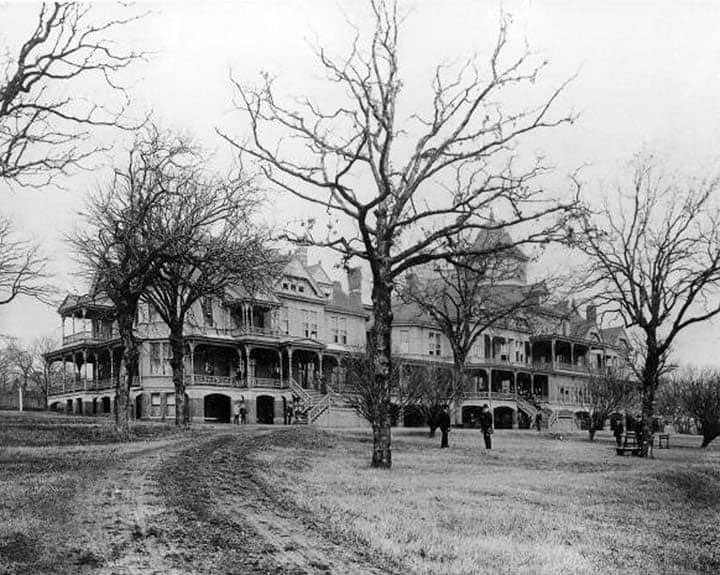
Primary Image: “Dr. Tutt’s Sarsaparilla & Queens Delight Augusta Ga.” bottle imaged on location by Alan DeMaison, FOHBC Virtual Museum Midwest Studio.
Support: Auction Lot 239: “DR. TUTT’S – SARSAPARILLA / & / QUEENS DELIGHT – AUGUSTA. GA,” (DeGrafft, 209 variant 1), Georgia, ca. 1875 – 1885, reddish amber, 7 3/8”h, smooth base, tooled lip. In ‘as found’ condition having several areas of minor scratches mostly on shoulder panels. Nice glass whittle. Rare in aqua but extremely rare in amber. We auctioned this bottle in 2006, and none have been auctioned since. – Jim Hagenbuch, Glass Works Auctions, February 2020
Support: Auction Lot 302: “DR. TUTT’S – SARSAPARILLA / & / QUEENS DELIGHT – AUGUSTA. GA”, America, 1870 – 1880. Medium-to-deep ‘old amber’, rectangular with beveled corners, double ring collar – smooth base, ht. 7 3/8”; (professionally cleaned with some light wear and scratches remaining, but no other form of damage). DeG #209. An extremely rare southern sarsaparilla is believed to be one of only 2, or possibly 3, known examples. Considered to be among Georgia’s top 25 bottles! This rare piece was found at an early Augusta Show in 1992 and has been locked up in a collection ever since. The mold is virtually identical to the Dr. Tebbett’s Physiological Hair Regenerator. – John Pastor, American Glass Gallery, Auction #21, October 2018
Support: Reference to Golden Eagle Bitters – Augusta & New York, PeachridgeGlass.com, Ferdinand Meyer V, January 29, 2015
Join the FOHBC: The Virtual Museum is a project of the Federation of Historical Bottle Collectors (FOHBC). To become a member.

